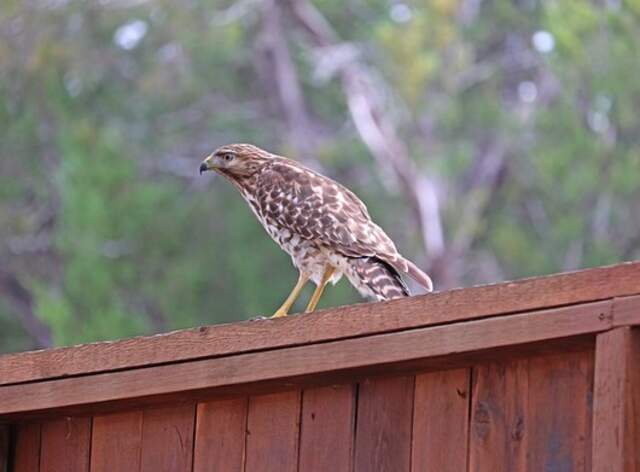Hawks are fascinating birds of prey that belong to the family Accipitridae. These raptors are known for their keen eyesight, powerful talons, and hooked beaks that they use to hunt and feed on a wide variety of prey.
From small rodents and mammals to reptiles, amphibians, and even other birds, hawks have a diverse diet that is well-suited for their predatory lifestyle.
One question that has intrigued many bird enthusiasts is “Do hawks eat dragonflies?”
While it may seem like an unusual dietary choice for these formidable predators, some experts believe that dragonflies could be part of a hawk’s diet.
Table of Contents
- 1 Hawks and Their Diet
- 2 Dragonflies: What Are They?
- 3 Do Hawks Eat Dragonflies?
- 4 The Importance of Dragonflies in Ecosystems
- 5 Conclusion
- 6 FAQs: Do Hawks Eat Dragon Flies?
- 6.1 Do hawks eat dragonflies?
- 6.2 Are dragonflies a significant part of a hawk’s diet?
- 6.3 Why would hawks choose to eat dragonflies?
- 6.4 Do all hawk species eat dragonflies?
- 6.5 How often do hawks eat dragonflies?
- 6.6 What role do dragonflies play in hawk ecosystems?
- 6.7 Are dragonflies essential for hawk survival?
- 6.8 Can hawks control dragonfly populations?
- 6.9 How do hawks hunt dragonflies?
- 6.10 Can the absence of dragonflies affect hawk ecosystems?
- 7 Author
Brief Overview of Hawks and Their Diet
Hawks are among the most agile and skilled hunters in the bird kingdom. They have sharp talons, powerful wings, and keen eyesight that help them spot potential prey from high above in the sky.
Depending on their size and species, hawks feed on different types of prey. For instance, larger hawks like red-tailed hawks primarily feed on mammals such as rabbits or squirrels.
Smaller species like sharp-shinned hawks typically target smaller prey like songbirds or mice. Hawks are also known to consume reptiles such as snakes or lizards.
Their hunting behaviors vary depending on the type of prey they’re targeting.
Some species like Cooper’s hawk prefer to ambush their prey by swooping down from above at great speeds while others like red-tailed hawks prefer flying low over open areas in search of small animals moving around on the ground.
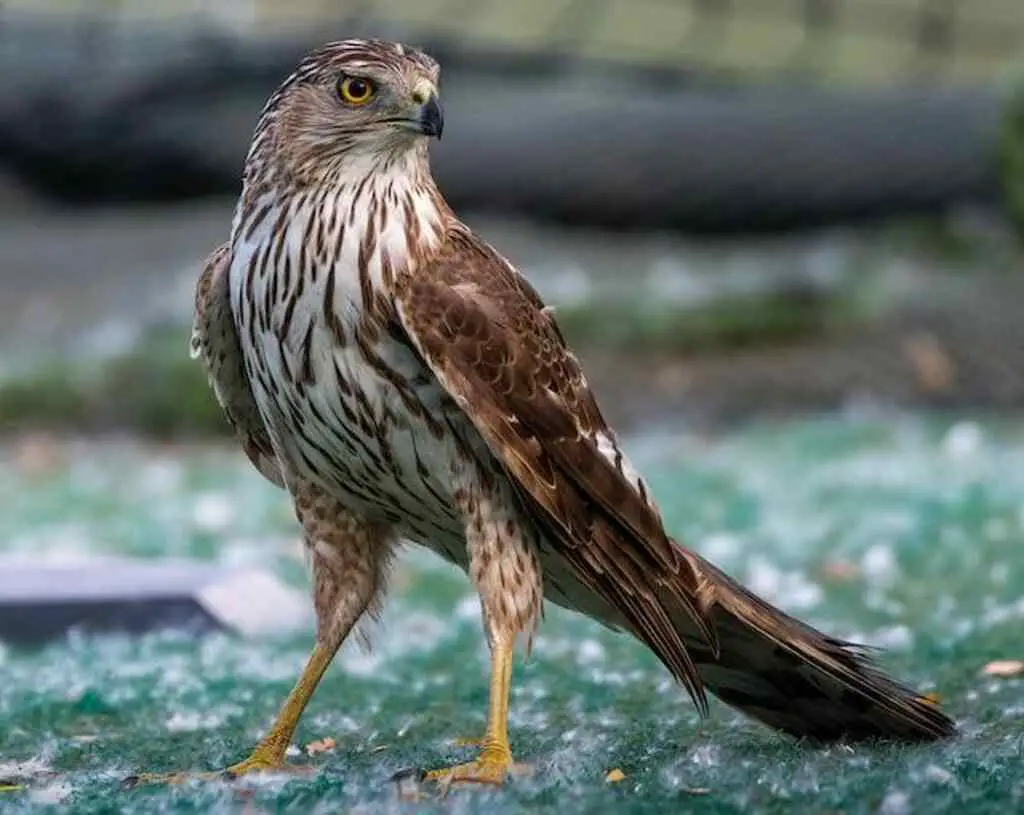
Introduce the Question: Do Hawks Eat Dragonflies?
While it is clear that hawks have a diverse diet ranging from mammals to reptiles and other birds; there isn’t much information available about whether they eat insects such as dragonflies specifically. Dragonflies are colorful insects that are known for their quick and agile movements in the air. They are usually found near water sources like lakes, rivers, or ponds.
They go through a complex life cycle that involves living in the water as nymphs before emerging as adults with wings. Given their small size and swift movements, it may seem like dragonflies wouldn’t be an ideal prey choice for hawks.
However, there have been some sightings of hawks catching dragonflies on occasion. In the following sections, we’ll explore whether hawks eat dragonflies and why they may or may not be part of a hawk’s diet.
Hawks and Their Diet
Discuss the different types of hawks and their feeding habits
There are many types of hawks, each with its own unique characteristics and feeding habits. Some hawks have a specialized diet, while others are more opportunistic feeders.
For example, the red-tailed hawk is one of the most common hawks in North America and primarily feeds on small mammals such as rodents and rabbits.
The Cooper’s hawk, on the other hand, is known for its ability to capture birds in mid-air with its quick speed and agility.
Other species of hawks have more specialized diets. The osprey is a fish-eating hawk that can be found near bodies of water such as lakes and rivers.
It uses its sharp talons to dive into the water and snatch fish from beneath the surface.
Explain how hawks hunt for prey
Hawks are skilled predators that use a variety of techniques to hunt for food. One common method used by many species of hawks is soaring above open areas looking for prey below.
Once an animal is spotted, the hawk will quickly swoop down at high speeds to capture it with their sharp talons.
Some species have adapted unique hunting methods to catch specific prey. For example, the ferruginous hawk has been known to use its powerful wings to create wind gusts that flush out rabbits from hiding places.
Other species like the sharp-shinned hawk will hunt close to trees where they can quickly maneuver around branches while chasing birds.
In addition to physical abilities, some hawks also rely on intelligence when hunting for food.
Some species like the Cooper’s Hawk are known for their ability to learn behavior patterns of potential prey such as songbirds at backyard feeders.
They will then use this knowledge to their advantage, waiting patiently for the perfect moment to strike.
Overall, hawks are skilled and adaptable predators that have a variety of hunting techniques at their disposal.
They can be found across many different habitats and play a crucial role in keeping populations of small animals in check.
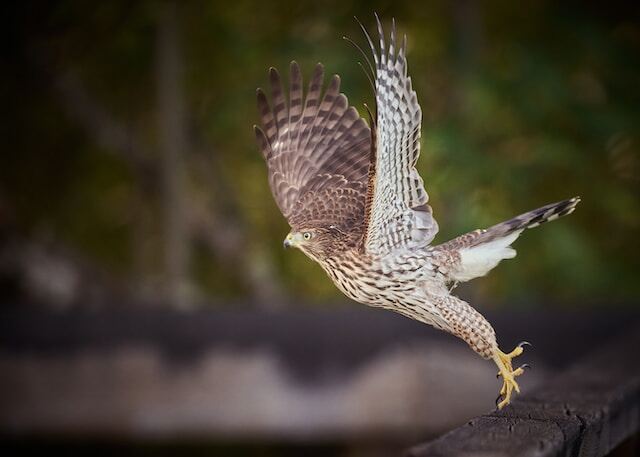
Dragonflies: What Are They?
Dragonflies are fascinating creatures that belong to the Odonata order, which also includes damselflies.
They have been around for over 300 million years and can be found in various parts of the world, including North America, Europe, Asia, Africa, and Australia.
There are over 5,000 species of dragonflies that exist today, and they come in a range of colors and sizes.
Physical Appearance
One of the most notable features of dragonflies is their unique physical appearance. They have long bodies with large eyes that cover most of their heads. Their wings are thin and transparent with intricate patterns on them.
The wingspan of different dragonfly species can range from as small as 1 inch to as large as 7 inches. Dragonflies also have six legs that they use to grab onto their prey or perch on plants or other surfaces.
Their bodies come in a variety of colors ranging from green to brown to blue. Some species even have stripes or other patterns on their bodies.
Behavior
Dragonflies spend most of their lives near water sources such as lakes, ponds, rivers or streams. These habitats provide a suitable environment for them because they need water for reproduction and hunting purposes.
One unique aspect about dragonfly behavior is that they are excellent fliers who can move quickly in all directions thanks to their two sets of wings working together like an airplane’s flaps and slats system as opposed to one set like birds or butterflies.
They use this skill to catch prey such as mosquitoes and flies while flying mid-flight.
Another interesting behavior is that dragonflies undergo a metamorphosis process during their life cycle – from an egg laid underwater; eventually hatching into nymphs/ larvae which live underwater for several months/years molting many times before finally morphing into adults capable of flying.
Thereafter, the females lay eggs on aquatic vegetation, and the cycle begins again.
Dragonflies and the Ecosystem
Dragonflies play an essential role in many ecosystems. They help control mosquito populations by feeding on their larvae, which reduces the spread of mosquito-borne diseases like West Nile Virus and Malaria.
Dragonflies also serve as a food source for other animals like birds and fish.
In addition to this, dragonflies are a sign of a healthy ecosystem because they require clean water to survive.
Their presence indicates that the water is free of pollutants such as chemicals or pesticides that can be harmful to other animals.
Overall, dragonflies are fascinating creatures that contribute to our ecosystem in numerous ways.
Understanding their behavior can help us appreciate them more and work towards protecting their habitats so they can continue to thrive in our world.
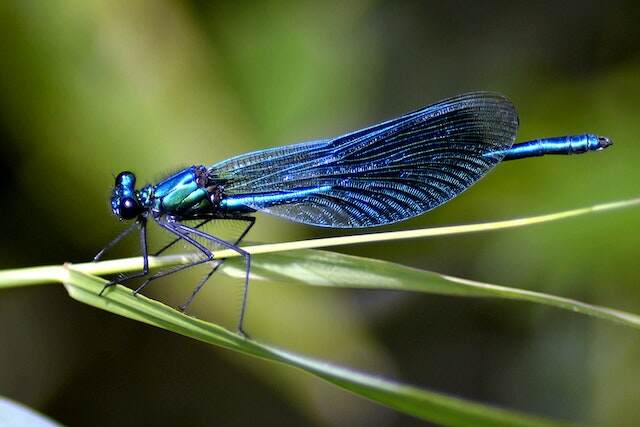
Do Hawks Eat Dragonflies?
Research Findings
The question of whether hawks eat dragonflies is one that has not been fully researched. However, a few studies have been conducted to explore the possibility.
According to research by the Raptor Center at the University of Minnesota, some hawk species have been known to eat dragonflies.
For example, Cooper’s hawks and sharp-shinned hawks have been observed snatching dragonflies out of the air as they fly by.
Other studies have also suggested that some larger hawk species may occasionally feed on dragonflies as well.
For instance, red-tailed hawks are known to consume a wide variety of prey including small mammals, birds, reptiles, and even insects.
While there aren’t many documented cases of red-tails dining on dragonflies specifically, their diet suggests that it is possible.
Why or Why Not?
So why would or wouldn’t a hawk choose to eat a dragonfly? One reason why they might not is because dragonflies are relatively small and don’t provide much nutritional value for larger birds like hawks.
Since most hawk species require large quantities of food each day in order to survive and stay healthy – sometimes up to 25% of their body weight – they may prioritize larger prey items over smaller ones like dragonflies.
On the other hand, there are several reasons why a hawk might be attracted to hunting or eating dragonflies despite their size.
For one thing, dragonflies are quick and agile fliers which can make them challenging prey for even skilled predators like hawks.
Additionally, since many species of dragonfly live near waterways or wetlands where hawks often hunt for other types of prey (such as fish or frogs), it’s possible that these birds may encounter them more frequently than other types of raptors.
Another factor that could influence whether a hawk eats dragonflies is their availability.
Depending on the time of year and location, some hawk species may not have access to their preferred prey items and may need to resort to hunting alternative food sources.
In such cases, dragonflies could be an attractive option for hawks looking for a quick and easy meal.
The Bottom Line
While there isn’t much information available on whether hawks eat dragonflies or not, it’s clear that it is possible under certain circumstances.
Factors such as the hawk species in question, their diet requirements and hunting strategies, and the availability of other prey items could all play a role in determining whether or not they would choose to target dragonflies specifically.
Ultimately, more research is needed in order to fully understand how these two creatures interact in the wild – but for now, it’s safe to say that anything is possible when it comes to nature.
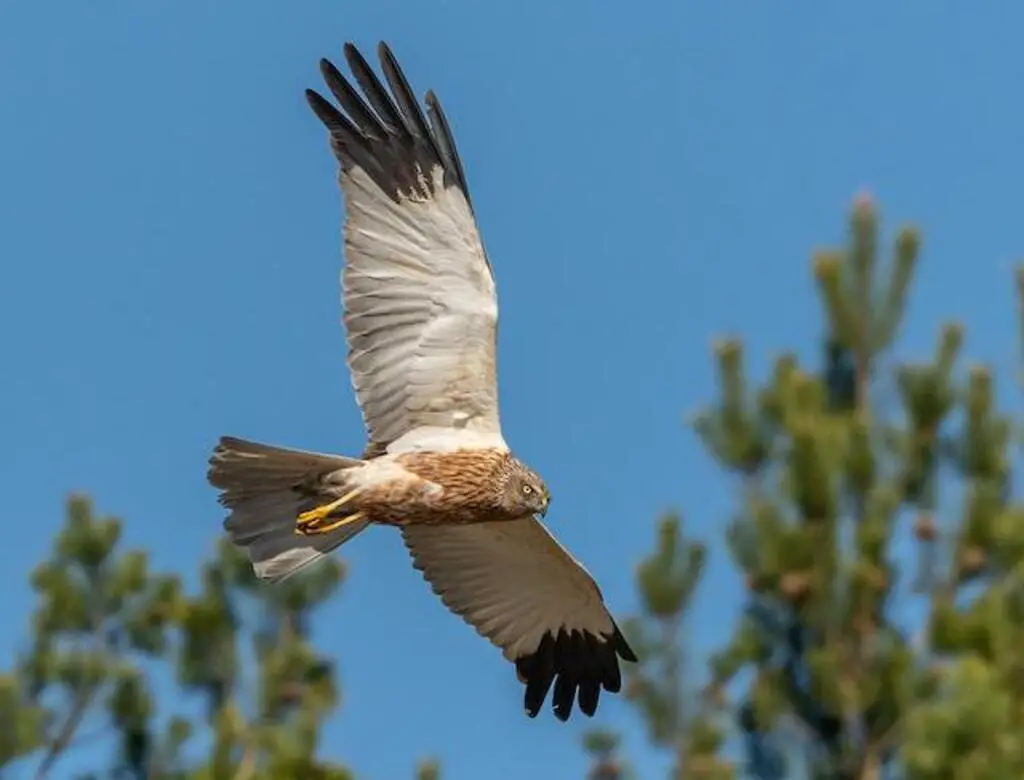
The Importance of Dragonflies in Ecosystems
Dragonflies are a crucial component of freshwater ecosystems. They play various roles in the food chain, and their presence or absence can impact the entire ecosystem.
For instance, dragonflies consume a significant number of insects such as mosquitoes, midges, and flies that can be pests to humans and other animals.
By preying on these insects, dragonflies regulate their population and contribute to maintaining ecological balance.
Dragonflies are also indicators of a healthy ecosystem. They have different stages in their lifecycle that depend on specific environmental conditions such as water quality and temperature.
Therefore, their presence in an area signifies that the ecosystem meets the necessary conditions for their survival.
In contrast, if there is a decline in dragonfly populations or species diversity, it may indicate that something is wrong with the ecosystem.
Dragonflies also aid in pollination. Some species of dragonflies feed on nectar from flowers while hunting for prey.
As they move from one flower to another, they transfer pollen grains helping plants reproduce. Studies have shown that dragonflies can be more effective pollinators than bees for some plant species.
Why it’s Important to Understand if Dragonflies Are Part of Hawks’ Diet
Understanding whether hawks eat dragonflies is essential because it provides insights into how different species interact within an ecosystem.
If hawks prey on dragonflies frequently, it means they play a crucial role in regulating their population size and distribution across various habitats.
Moreover, understanding which insects hawks hunt can help conservationists identify keystone or indicator species whose decline would impact the entire food chain negatively.
For example, if hawks stop hunting dragonflies due to factors such as habitat loss or climate change effects on insect populations’ growth rate – then there could be cascading negative effects throughout the food web.
Knowing whether hawks eat dragonflies could also reveal information about the health of the ecosystem.
If dragonflies are thriving, it can indicate that their habitat is healthy, and there are no significant threats to their survival.
On the other hand, if hawks do not hunt dragonflies, it could suggest that the insect population is either too low or absent in the area.

Conclusion
Recap of Main Points
After our in-depth exploration of the question “Do hawks eat dragonflies?” we have learned that while hawks are known to be versatile predators, they generally do not make a habit of hunting dragonflies.
However, some species of hawks may occasionally consume dragonflies as part of their diet, particularly if other prey is scarce.
It is important to recognize the crucial role that dragonflies play in ecosystems, and to understand how these insects fit into the food chain.
Throughout this article, we discussed the diverse variety of hawks and their feeding habits.
We explored in detail what dragonflies are, including their physical appearance and behavior.
Then we looked at research findings on whether or not hawks eat dragonflies and considered why or why not they would consume them.
We also examined a crucial aspect of ecosystems: the role that dragonflies play as a predator themselves and as prey for other animals.
It was fascinating to learn how important these insects are for maintaining biodiversity within aquatic environments.
Final Thoughts
While it may be surprising to some that hawks do not frequently eat dragonflies, it is important for us to remember that each animal’s diet is uniquely tuned to suit its needs.
Despite being an abundant food source in many parts of the world, there are simply more enticing options available for most hawk species.
However, even though they aren’t part of a hawk’s typical diet doesn’t make them any less valuable in our ecosystem.
Understanding which animals eat which insects helps us better appreciate each creature’s place in nature.
By gaining a better understanding about what wildlife eats (and does not eat), we can help conserve resources and maintain balance within ecosystems.
By studying the habits and habitats of birds like hawks and insects like dragonflies together with a broader approach towards preserving our natural world will help ensure that both predator and prey coexist in a healthy balance for years to come.
FAQs: Do Hawks Eat Dragon Flies?
Do hawks eat dragonflies?
Yes, hawks may occasionally eat dragonflies. While dragonflies are not a staple in their diet, certain hawk species, such as Cooper’s hawks and sharp-shinned hawks, have been observed catching dragonflies in flight.
Are dragonflies a significant part of a hawk’s diet?
No, dragonflies are not a significant part of a hawk’s diet. Hawks primarily feed on mammals, birds, reptiles, and larger prey items that provide more nutritional value. Dragonflies are relatively small and do not fulfill the dietary requirements of most hawk species.
Why would hawks choose to eat dragonflies?
Hawks might choose to eat dragonflies due to their quick and agile flying patterns, which make them challenging prey. Additionally, if preferred prey items are scarce or unavailable, hawks may resort to hunting alternative food sources like dragonflies.
Do all hawk species eat dragonflies?
Not all hawk species eat dragonflies. Some hawk species have specialized diets, while others are more opportunistic feeders. While a few hawk species have been observed consuming dragonflies, it is not a universal behavior across all hawk species.
How often do hawks eat dragonflies?
The consumption of dragonflies by hawks is not a regular occurrence. It is more of an occasional behavior, influenced by factors such as prey availability, habitat, and the specific dietary needs of different hawk species.
What role do dragonflies play in hawk ecosystems?
Dragonflies play a limited role in hawk ecosystems. While they may serve as occasional prey for some hawks, their overall impact on hawk populations and ecological dynamics is minimal compared to other prey items that hawks rely on more heavily.
Are dragonflies essential for hawk survival?
No, dragonflies are not essential for hawk survival. Hawks have adapted to thrive on a wide range of prey items, and while dragonflies can be a part of their diet, they are not a critical component that hawks depend on for their survival.
Can hawks control dragonfly populations?
Hawks do not play a significant role in controlling dragonfly populations. Dragonflies have their own natural predators and ecological mechanisms that regulate their numbers, and hawks’ predation on dragonflies is not substantial enough to impact their populations significantly.
How do hawks hunt dragonflies?
Hawks typically hunt dragonflies by catching them in flight. They utilize their speed, agility, and sharp talons to capture dragonflies while in mid-air. Hawks employ various hunting techniques depending on the specific species and the behavior of their prey.
Can the absence of dragonflies affect hawk ecosystems?
The absence of dragonflies would not have a significant direct impact on hawk ecosystems. Hawks have diverse prey options available to them, and their survival and ecological roles are not solely dependent on the presence or absence of dragonflies in their environment.


